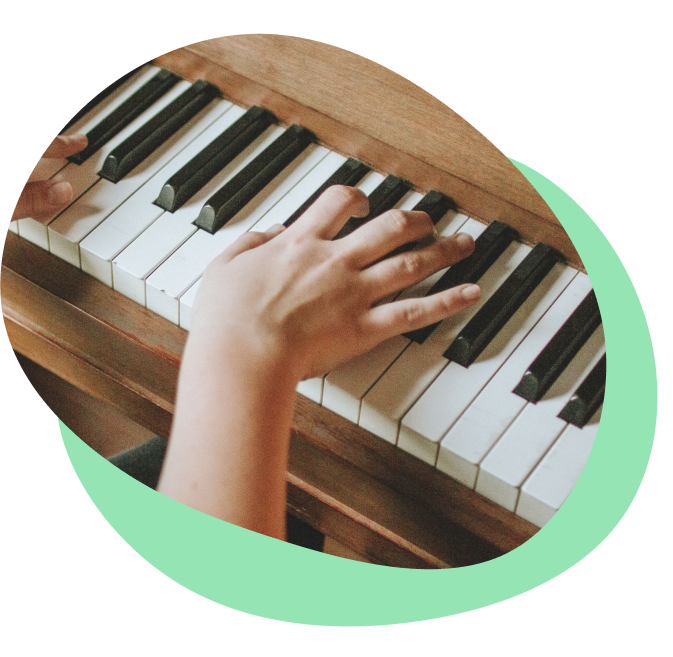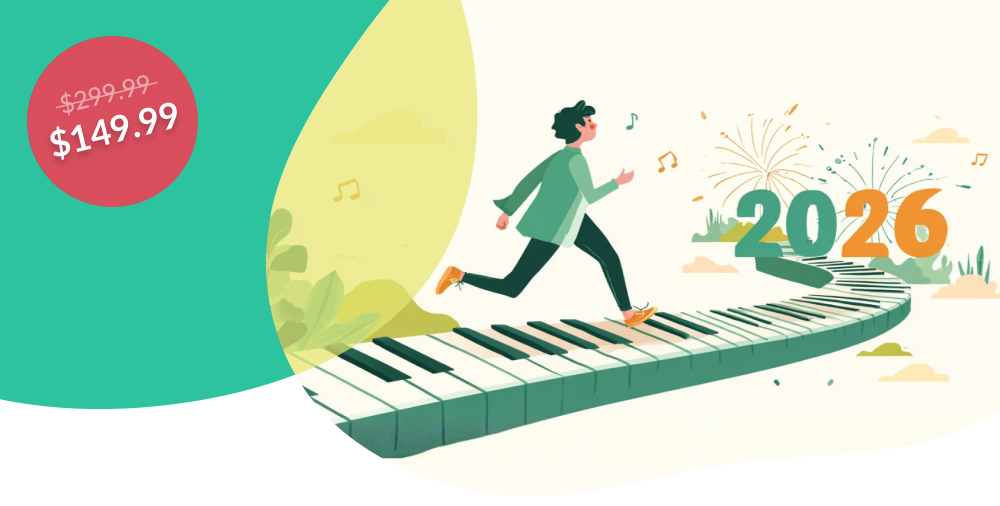Jazz piano chords are some of the most beautiful sounds that you can make. Knowing some common jazz chord chords can really add a lot of interest to your piano playing. Learning how to use these chords is not as difficult as you might imagine. With help from Skoove and some basic formulas you will be playing jazz piano chords for beginners in no time. In this article we will have a look at some basic jazz chords as well as how to construct them, chord progressions and how to add them to your practice routine. Let’s get stuck in.
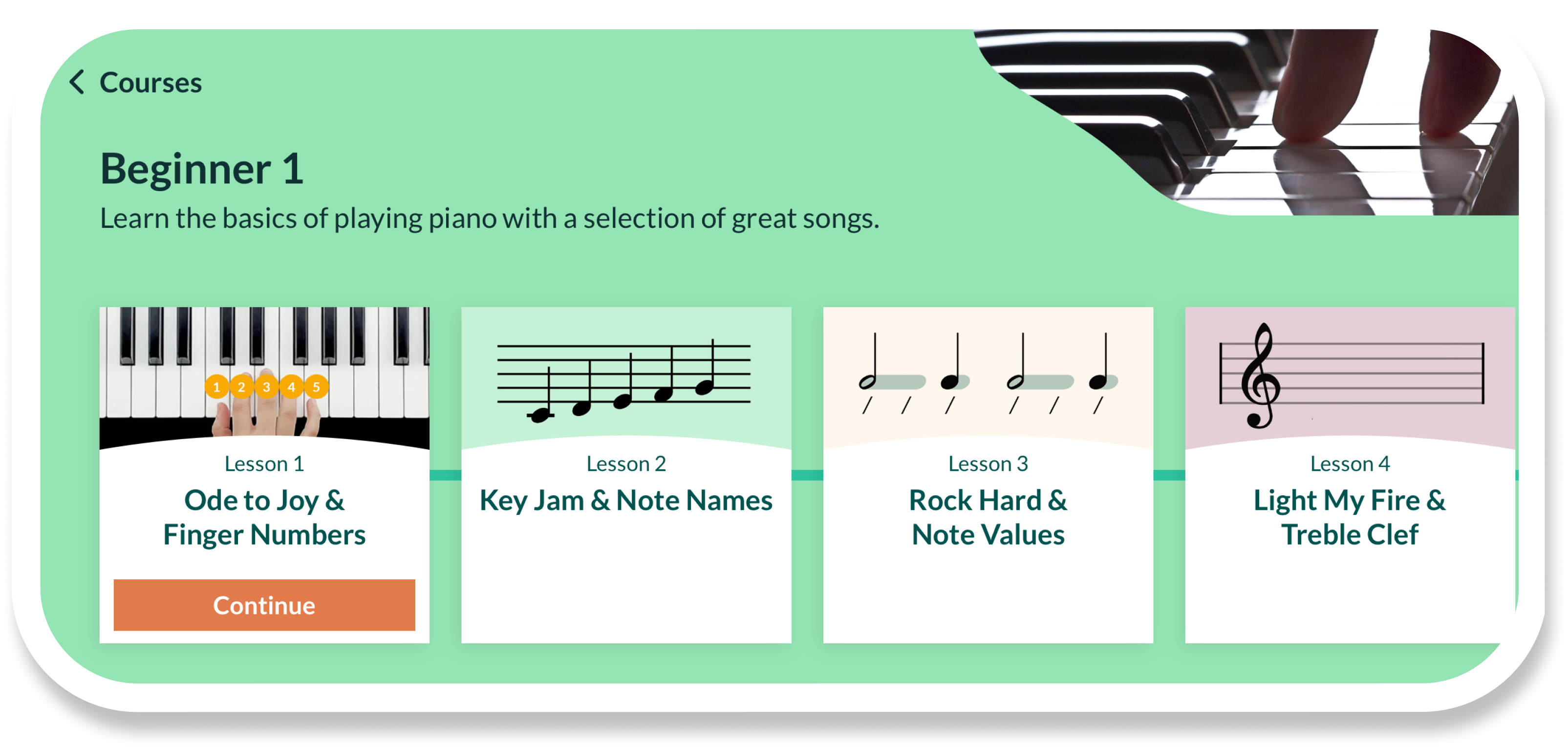
What are jazz piano chords?
Whilst jazz music can be complex and many well known jazz musicians do have extraordinary ability, most jazz pieces are composed of a few basic chords and chord progressions.
Before we go any further let’s recap our basic three note chords and their intervals. These basic triads are major, minor, augmented and diminished.

Each of these chords has a particular sound based on the intervals they are made up of. These basic chords are the initial building blocks of jazz chords.
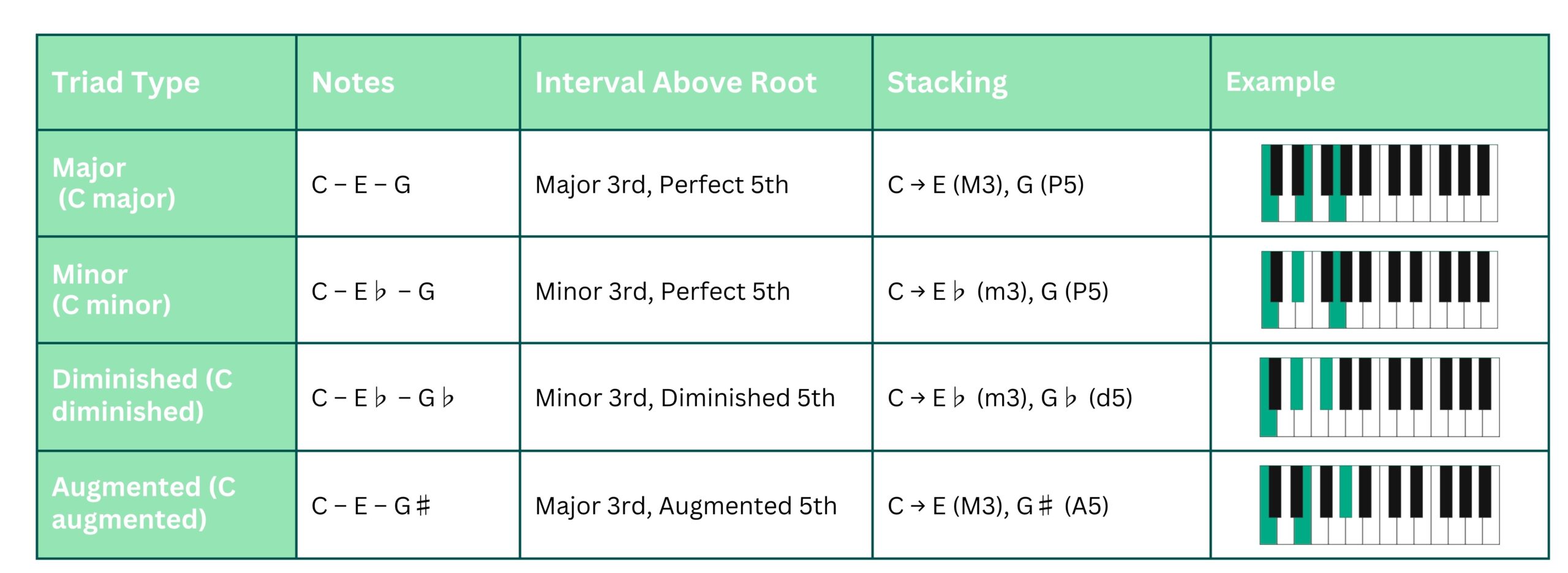
Types of jazz chords and how they sound
In order to know how to play jazz chords, you need to learn a little bit of chord theory before you start playing. When making common jazz chords we build on all of our basic chords, major, minor, augmented and diminished. The best way to get to grips with these chords is to know how they sound and are constructed before you play them in a jazz chord progression. Let’s take a look at some examples.
What are seventh chords?
With the triads we just looked at you will have noticed they all have a root, third and fifth. These are the degrees of a scale built from a chosen root. A seventh chord adds another note to our basic triad giving us a root, third, fifth and seventh. This addition of a new chord tone gives us seventh chords. The quality and construction of these seventh chords gives them each an individual sound and function.
For example, if we take a C major triad C – E – G and go up another third in the scale to B and add this note to the triad, giving us C – E – G – B, you have a major seven chord. A major seven is one of the many additions you can make to basic triads to add more of a jazzy sound to your playing.
While we won’t cover examples of them all in this article you can take a look at this handy jazz piano chords chart. These are some of the most useful seventh chords and will help you get to grips with playing and constructing some beautiful new chords.
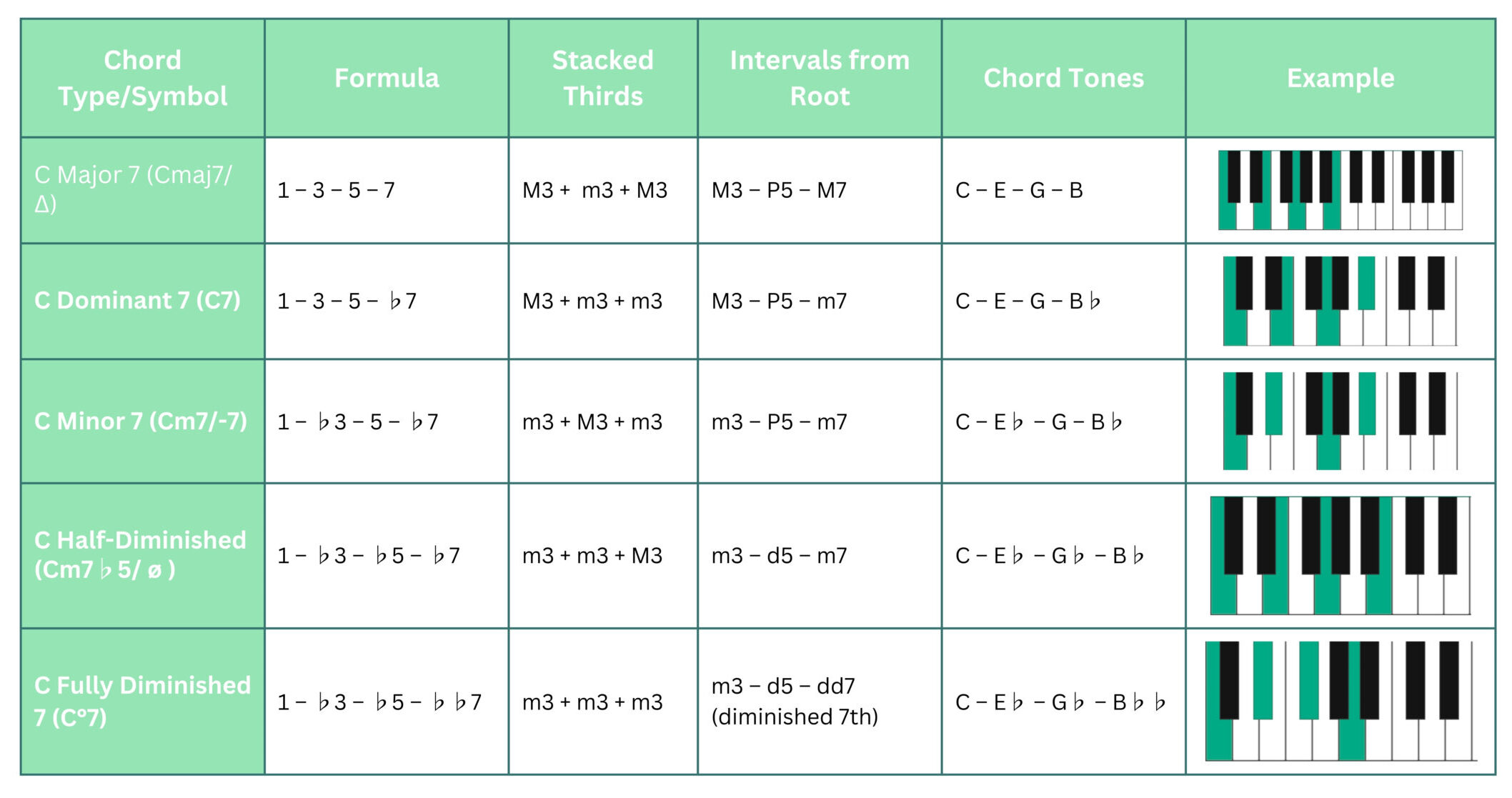
What are jazz chord extensions?
Chord extensions work just like seventh chords; you can keep going up in thirds. The next extension after the seventh is the ninth, which we will focus on for this article.
For example, if we take our C major 7 chord and add another third, D, we get C – E – G – B – D, this is a C major 9 chord.
Jazz musicians like to have fun by adding extensions to chords to get more flavour than standard 7th chords.
For example adding a flat nine to a dominant 7 chord adds a lot of extra crunch. If we take our C7 chord and add a nine, D, and flatten it to D♭we get a C7♭9, lots of extra flavour. This table has a few more options for some useful chords with added ninths.
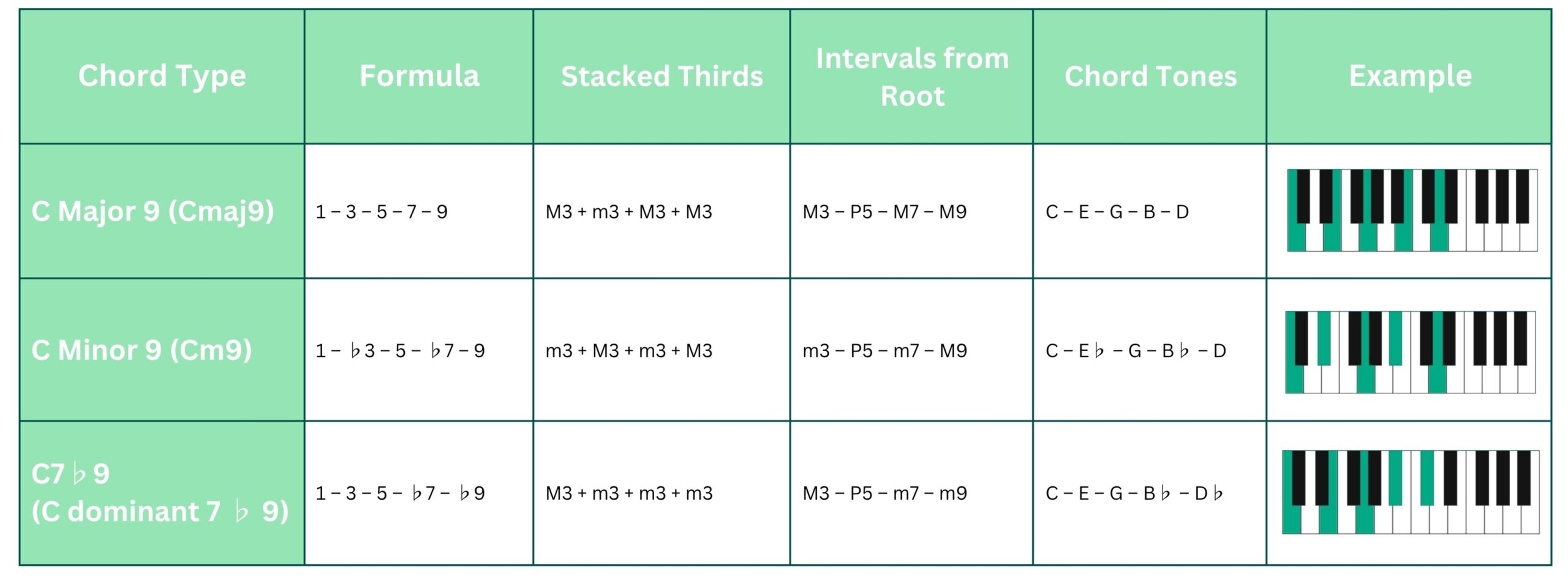
Just like 7th chords a lot of these extensions occur naturally when you look at the extended chords that exist within scales but as you are just getting to grips with jazz chords it’s best to just stick to stacking them by intervals until you get used to using them in chord progressions.
Suspended chords
Another common type of chord in jazz music is the suspended chord. These chords are different from major triads because they do not contain thirds, replacing them with either a major second or perfect fourth. They are an important part of learning jazz for more variety and interesting movement.
These sus chords can be used as part of any of the 7th or 9th chords we talked about before that are built on major or minor triads. Try playing around with them and experiment with this new sound.
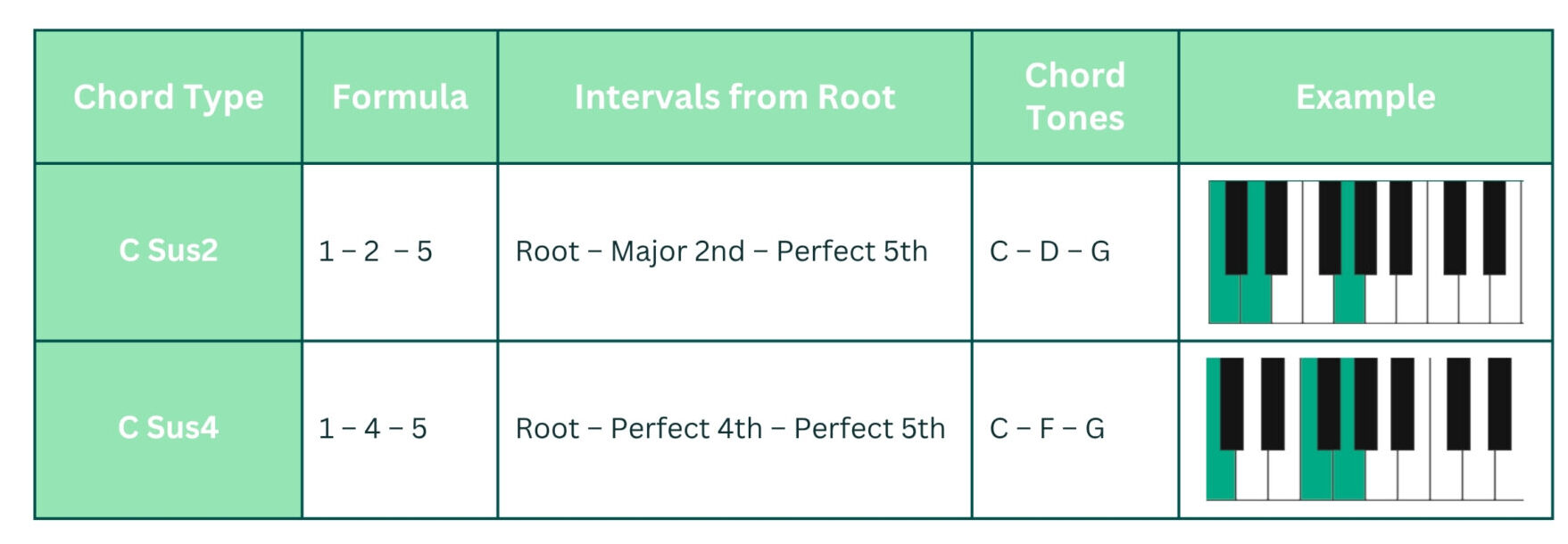
Chord progressions
The best way to put these new chords into practice is by playing a couple of common chord progressions. The most common chord progression in jazz is the ii V I, the ‘two five one’ progression. This can be played in either major or minor. These roman numerals refer to the scale degrees the chords in the progression are built on. Let’s look at a couple of examples of ii V Is using 7th chords.
C major:
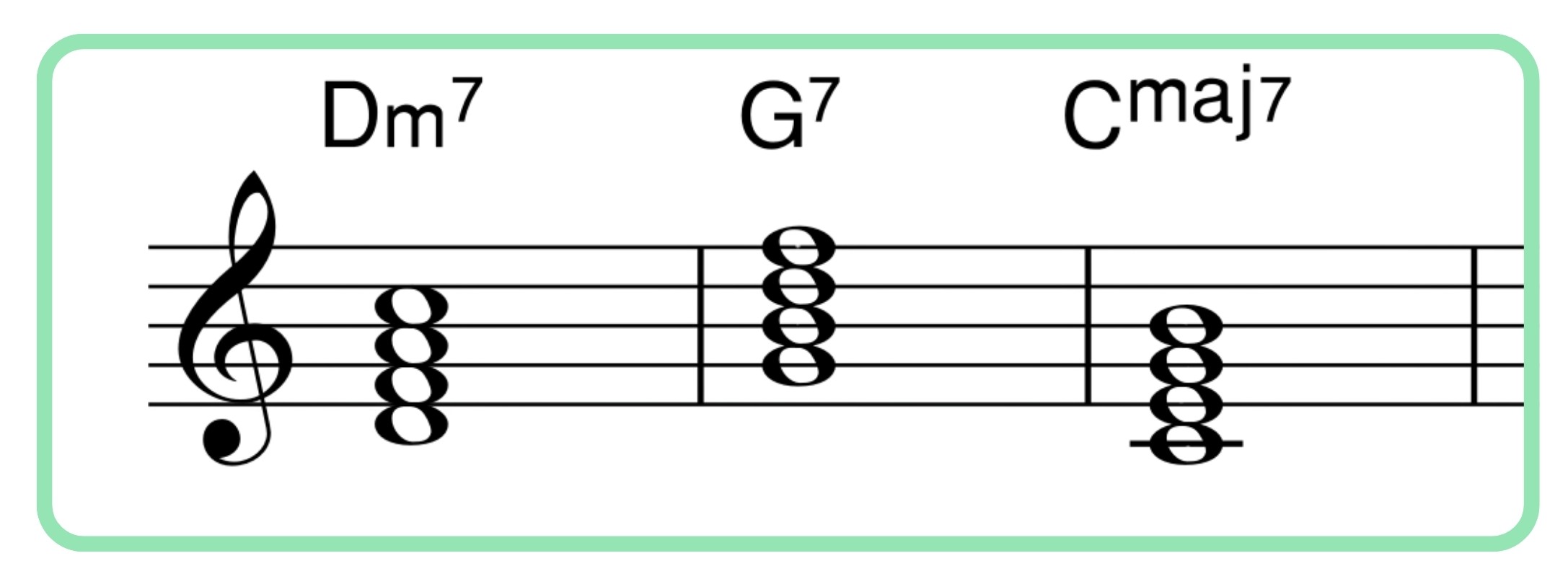
C minor:
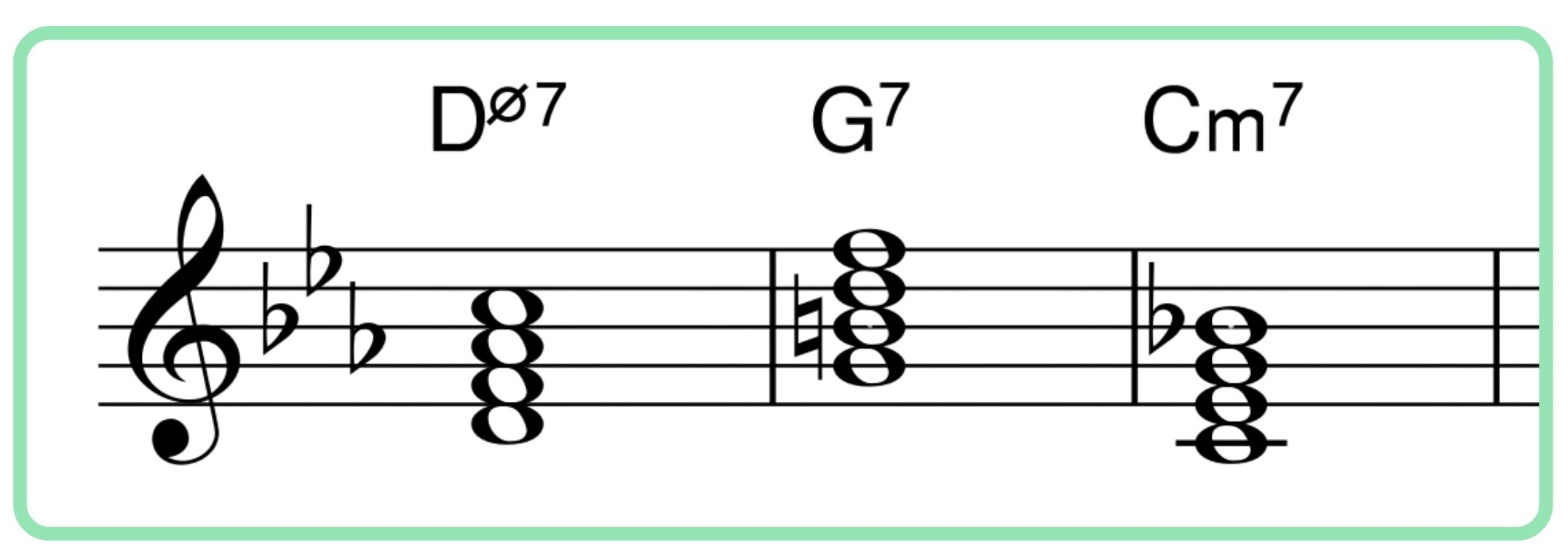
Notice how these chords can occur naturally in their respective keys, with C harmonic minor using the raised seventh for the B in the G7. Have a go at playing ii V I’s in a few more keys. You can see an example of both these progressions in Autumn Leaves on the Skoove App.
Practicing jazz piano
Moving harmony with chord voicings
In the examples given above, the chords are voiced in 3rds in order for you to see the relationships of the chord tones and extensions clearly. Now we understand how to build our chord in 3rds, we can invert and reorder the notes to make smoother, more pleasing and interesting harmonic progression.
If we play the opening of Autumn Leaves again we could voice the chords like this:
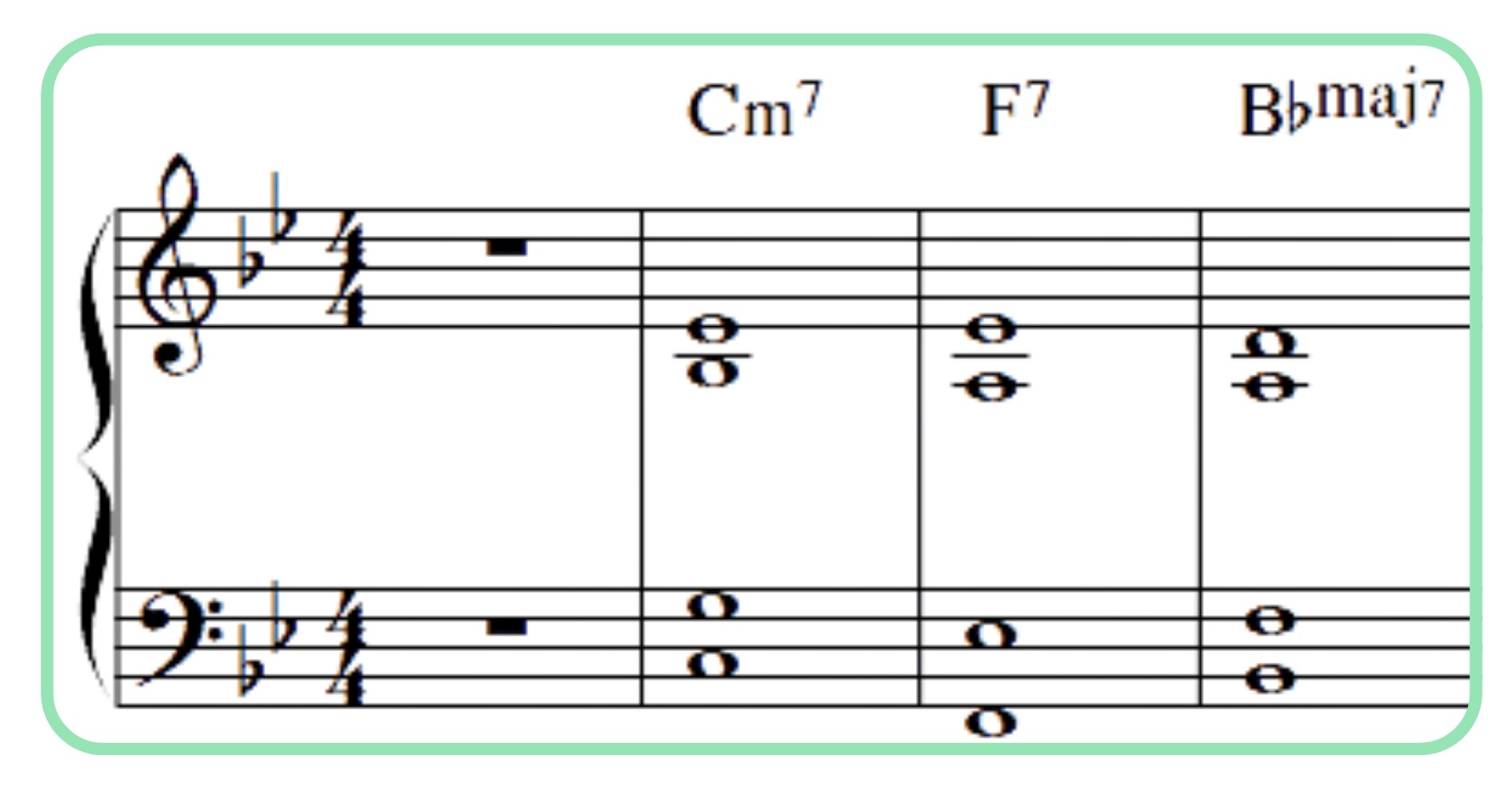
Notice how the right hand chord changes above are smooth now rather than moving in a block-like fashion This is what we are aiming for when we voice our jazz chords. Try adding in some extensions like this:
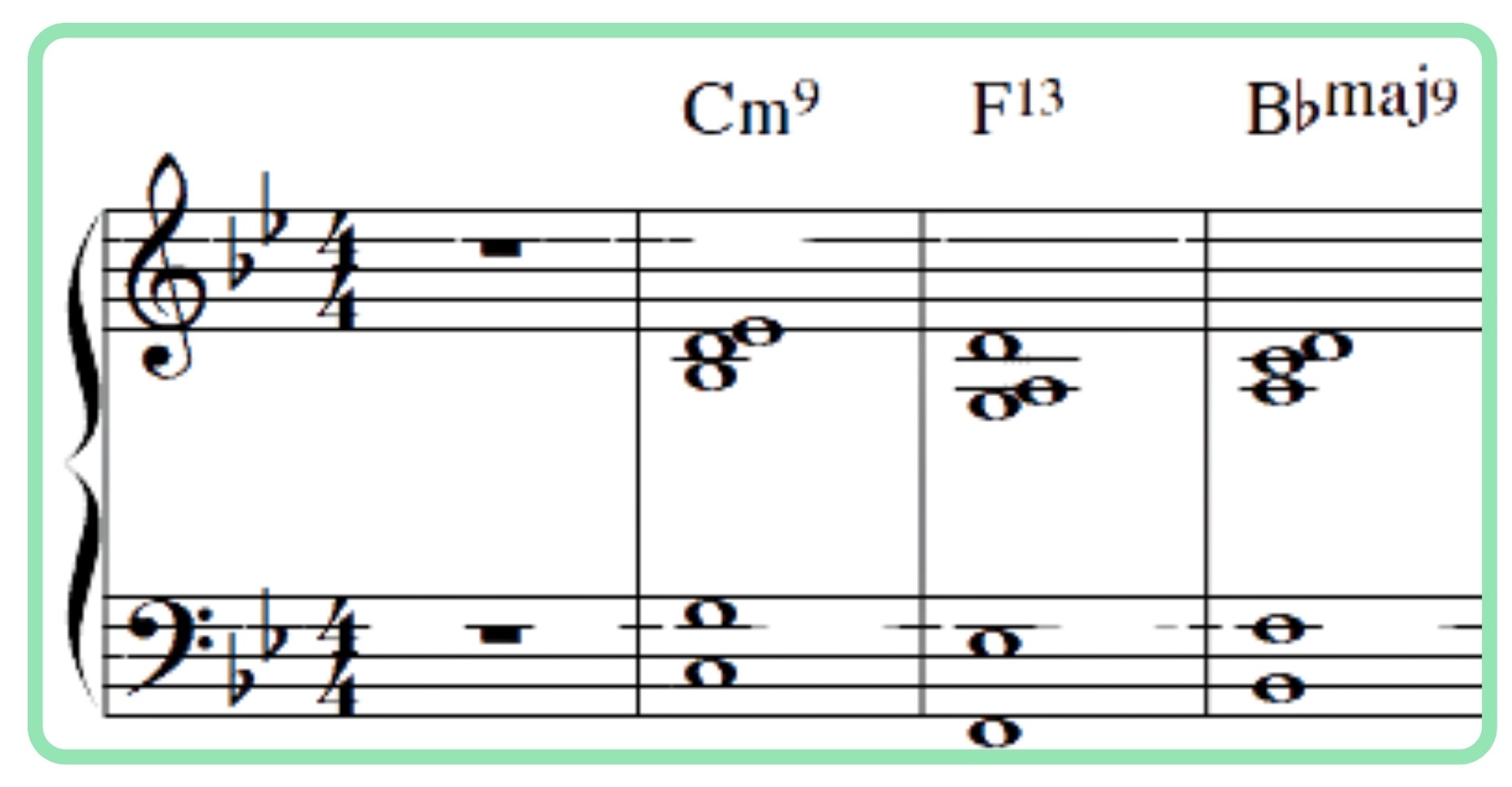
How to play jazz standards?
Like anything piano, practice plays an invaluable part of the picture. The most valuable form of practice, after you have gained some insight into theory, is putting your knowledge to the test. A great place to learn to play these chords in context is the jazz classic, Blue Moon.
A worthwhile exercise is to play the contained chord progressions individually and cycle ii-V-I progressions in order to familiarize yourself with them. More jazz standards you can do this with are Bye Bye Blackbird, and All the Things You Are Skoove can help you learn these classic songs with ease.
What to do with all these new chords?
Now you know how to play jazz piano chords. Listening to jazz music is a great organic way of familiarizing yourself with jazz chords and harmonies. Pianists like Herbie Hancock, Bill Evans, McCoy Tyner, Wynton Kelly and Thelonius Monk are just a handful of musicians you should listen to. Another sure-fire way to learn how to play major jazz chords, jazz music is to try out the Skoove piano app. Be sure to keep up the practice and have fun playing. Well done!
Author of this blog post:
Matthew Dickman

With over a decade of experience in music education Matthew holds a BA in Music from Paul McCartney’s LIPA and an MA in Composition from the University of Salford. Mathew has developed a distinctive compositional voice and approach to music theory education through his research and work in the music industry. Matthew’s writing for Skoove combines experience from orchestral and media composition, and as a gigging jazz musician, to create a wholistic and accessible pedagogy for musicians of any level. Away from music, he enjoys reading and exploring nature to expand his horizons and knowledge contributing to his holistic teaching style.




